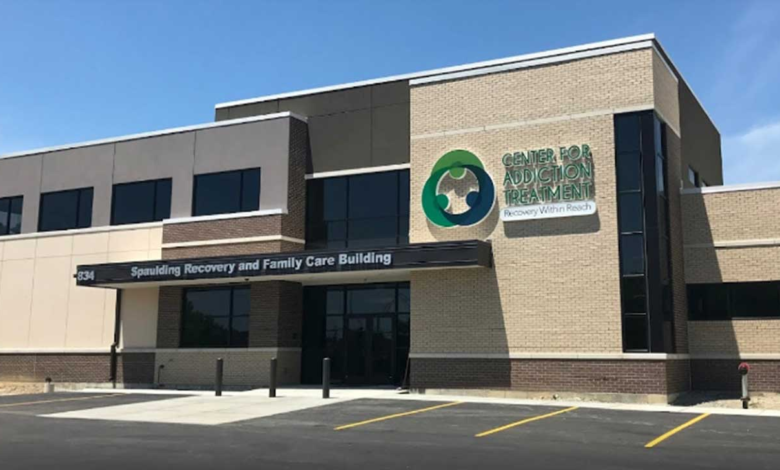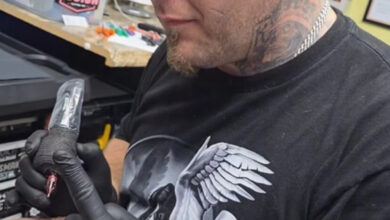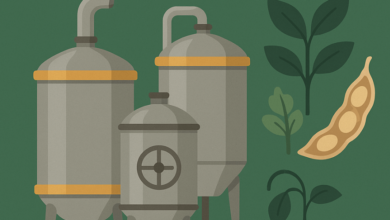Effective Strategies to Find Help for Opioid Addiction in Cincinnati

Understanding Opioid Addiction: The Hidden Struggles
The Biology of Addiction: What Happens in Your Brain?
Opioid addiction is a complex condition that manifests from a combination of biological, psychological, and environmental factors. At its core, it fundamentally alters the brain’s chemistry. Opioids, which include prescription pain medications like oxycodone and illicit drugs like heroin, bind to specific receptors in the brain, leading to profound changes in brain function. These receptors are part of the body’s natural pain management and reward system. When opioids attach to these receptors, they inhibit pain signals and release large amounts of dopamine, a neurotransmitter central to feelings of pleasure and reward. Over time, repeated opioid use can lead to changes in the brain’s structure and functioning that foster compulsive drug-seeking behavior even when the initial cause often chronic pain is no longer present.
The brain begins to rely heavily on these substances to feel “normal,” creating a dangerous cycle of dependency. As tolerance builds, higher doses are required to achieve the same effect, leading to severe physical and psychological reliance on the drug. This biological response provides insight into why addiction is not merely a matter of willpower or moral failing; it transforms the brain in ways that can lead to a compulsion to seek relief that can feel insurmountable.
Recognizing the Signs: When is it Time to Seek Help?
Identifying the signs of opioid addiction can often be difficult. Those affected may not even realize they have crossed the threshold into addiction. Common early warning signs can include increased tolerance requiring more of the drug to achieve the same effects withdrawal symptoms when not using, and a preoccupation with obtaining and using opioids. Behavioral indicators often manifest as neglect of responsibilities, withdrawal from relationships, or reckless use despite negative consequences. Physical signs may include noticeable changes in weight, deterioration of personal appearance, or the deceitful behavior commonly associated with those entrenched in addiction.
If you or someone you know exhibits these behaviors, it is crucial to be proactive. Seeking help early can significantly improve recovery outcomes. The first step in recognizing the need for help is self-awareness; engaging in open discussions with trusted friends or professionals about concerning behavior can shed light on the reality of the situation. If opioid use is beginning to interfere with your daily life, relationships, or responsibilities, it’s time to reach out for assistance and explore treatment options.
Breaking the Stigma: Addressing Misconceptions Around Addiction
Societal stigma surrounding addiction complicates the journey to recovery, often leading individuals to suffer in silence. Misconceptions that addiction is a sign of moral weakness or a lack of willpower can prevent people from seeking the help they desperately need. The reality is that addiction is a medical condition that affects the brain, often influenced by genetics, trauma, and mental health issues. Understanding this can help break down the barriers that prevent individuals from accessing care.
Education plays a significant role in debunking these myths. Community outreach programs, educational workshops, and conversations about addiction can foster understanding and compassion rather than judgment. Engaging in advocacy efforts to promote awareness can help reshape public perception. Every conversation around addiction contributes to a larger movement toward empathy that encourages individuals struggling with addiction to seek help without fear of being ostracized.
Local Resources: Navigating Cincinnati’s Recovery Landscape
Top Rehabilitation Centers: Where to Start Your Journey
Cincinnati is home to a variety of rehabilitation centers that cater to different needs and preferences. These facilities offer a range of treatment options, including detoxification, inpatient and outpatient therapies that incorporate both evidence-based practices and holistic approaches. The first step toward recovery typically involves evaluating the level of care that is most appropriate for the individual’s specific situation. Facilities like the Cincinnati Addiction Services and BrightView provide comprehensive assessments that help patients understand the kind of support they require.
Rehabilitation centers often specialize in various aspects of treatment, such as mental health support, co-occurring disorders, and therapeutic modalities that address the underlying causes of addiction. It is beneficial to research and visit potential facilities to gain a sense of their approach, ethics, and community environment. Transitioning into recovery is a difficult journey, and finding a supportive rehabilitation center that aligns with personal needs can make a significant difference in outcomes.
Support Groups: Finding Your Tribe in Cincinnati
Support groups can offer invaluable communal support and understanding that is difficult to find in other settings. Groups such as Narcotics Anonymous (NA) and SMART Recovery can provide an essential lifeline for those seeking to find community among others who understand their struggles. These groups are not only spaces for sharing experiences but also for learning coping strategies and gaining insights from others who have navigated similar paths.
For those looking to find help for opioid addiction in Cincinnati, the city offers a variety of established meetings catering to different demographics and experiences. Local organizations often facilitate these gatherings, making it easier for individuals to connect with resources that suit their personal needs. It is essential to foster a strong support network during recovery, and support groups can be the ideological and emotional backbone that sustains individuals through setbacks and triumphs alike. Engaging in support groups not only normalizes the recovery experience but also reinforces commitment to sobriety.
Community Outreach Programs: Making Use of Local Services
Community outreach programs in Cincinnati play a crucial role in addressing opioid addiction by providing resources that may not be accessible through traditional avenues. These programs often focus on prevention, intervention, and recovery support while seeking to engage the community in healing and recovery processes. Organizations such as the Ohio Health Department and Health Resources and Services Administration (HRSA) offer various services, including counseling, health screenings, and educational workshops designed to destigmatize addiction and expand access to necessary support.
These outreach programs often tailor their services to meet the needs of specific populations, including adolescents, families, and those with co-occurring mental health challenges. Engaging with community resources creates a more comprehensive support system, which can be particularly vital during early recovery phases. Spreading awareness about these services can empower individuals to take advantage of local opportunities designed to promote public health and healing.
Personalized Treatment Options: Finding What Works for You
Medication-Assisted Treatment: Balancing Recovery with Comfort
Medication-Assisted Treatment (MAT) is a critical component of opioid addiction recovery and has garnered significant attention as an effective approach. MAT combines the use of medications such as methadone, buprenorphine, and naltrexone with counseling and behavioral therapies. These medications work by normalizing brain chemistry, easing cravings, and reducing withdrawal symptoms, allowing individuals to engage more fully in the therapeutic process.
Each medication serves a distinct purpose and may be chosen based on individual circumstances, history, and treatment goals. For example, buprenorphine can be particularly useful as it mitigates withdrawal symptoms while ceiling its effects to reduce overdose risk. MAT provides a multifaceted toolkit for those navigating recovery, enabling individuals to approach the healing process with greater comfort and stability. The primary goal of MAT is to foster long-term recovery, improve the quality of life, and support individuals in resuming their normal daily activities.
Therapy & Counseling: The Emotional Toolkit for Healing
Psychotherapy, or therapy, is an integral part of addiction treatment that addresses the emotional and psychological dimensions of addiction. Individual counseling and group therapy can provide insight into underlying issues that may contribute to substance use, ranging from trauma to unresolved grief to co-occurring mental health disorders. Cognitive Behavioral Therapy (CBT), for example, is frequently employed to help individuals recognize and change negative thought patterns and behaviors associated with addiction.
Therapists specialized in addiction can create tailored treatment plans focused on fostering emotional resilience and developing healthier coping strategies. Engaging in therapy creates a safe space where individuals can express feelings, process experiences, and establish a more positive self-identity. The skills learned in therapy can help prevent relapse and support ongoing recovery efforts.
Holistic Approaches: Beyond Traditional Methods in Recovery
In addition to evidence-based treatments, many individuals are finding strength in holistic approaches to recovery. Holistic treatment modalities emphasize the whole person, including physical, emotional, and spiritual healing. Techniques such as mindfulness meditation, yoga, acupuncture, and art therapy are gaining traction as complementary methods for managing stress, reducing cravings, and improving overall wellness.
For example, mindfulness practices can help individuals become more aware of their thoughts and feelings, enabling them to respond to cravings with greater awareness rather than acting impulsively. Yoga and exercises promote physical health and enhance emotional resilience, while art therapy allows individuals to express complex feelings that might be difficult to articulate. Such modalities can facilitate a deeper connection with oneself, encouraging a more profound understanding of personal motivations and values. By incorporating holistic approaches, individuals may find balance and renewed strength during their recovery journey.
Building a Support Network: Friends, Family, and Beyond
The Role of Loved Ones: How to Foster a Supportive Environment
The importance of a solid support network during recovery cannot be understated. Friends and family play a crucial role in providing encouragement, accountability, and love. However, fostering a supportive environment requires understanding and engagement on the part of loved ones. Communication is essential; family members should be encouraged to educate themselves about addiction to better understand the challenges their loved ones face.
Establishing healthy boundaries is also vital. Family members should encourage recovery-friendly behaviors while avoiding enabling environments that can foster relapse. Supportive networks should be transparent about their feelings, as open dialogues can help rebuild trust and repair relationships affected by addiction. Involving loved ones in recovery efforts, such as attending family therapy sessions or counseling, can further strengthen bonds and foster unity in the healing process.
Aftercare Programs: Staying Sober Once You’re Clean
Aftercare programs are an essential component of the recovery spectrum, providing ongoing support after formal treatment has concluded. Successful rehabilitation is not merely about getting clean but sustaining a substance-free life. Aftercare can include continued therapy, support group meetings, and community engagement initiatives that foster connections and provide accountability. These programs can help individuals navigate the challenges of everyday life, manage cravings, and avoid relapse triggers.
Aftercare is about offering a safety net as individuals transition back into their daily routines. Research consistently shows that sustained support, especially in those first critical months post-treatment, significantly impacts recovery outcomes. Individuals engaged in aftercare programs often report lower relapse rates, underscoring the importance of this ongoing support structure.
Advocacy and Awareness: Becoming a Voice for Change in Cincinnati
Engaging in advocacy and awareness initiatives can have a profound impact on both individual recovery journeys and the broader community’s understanding of addiction. By sharing stories and experiences, individuals can provide a face to the issue and dispel myths surrounding opioid addiction. Cincinnati is home to numerous advocacy organizations focused on ending the epidemic of opioid addiction, increasing access to care, and promoting education around prevention and treatment.
Participating in or supporting local initiatives whether it be community workshops, public discussions, or social media campaigns amplifies the conversation around addiction and recovery. Advocates play a pivotal role in shaping policy, increasing funding for addiction services, and driving changes that improve community health. Becoming an active participant in these efforts can offer individuals a powerful sense of purpose in their recovery journey, reinforcing the idea that their experiences can lead to impactful change.
Read also: Korean Singing Room in Hongdae: Where Music Becomes a Hobby
Opioid addiction continues to pose significant challenges, particularly in urban areas like Cincinnati. However, by understanding the underlying issues of addiction, leveraging local resources, receiving personalized treatments, and building supportive networks, individuals can forge their path to recovery. If you or someone you know is struggling, remember that seeking help is a sign of strength, and a wealth of resources is available in Cincinnati to support you on your journey toward healing.




